hoop


John MacWhirter RA (27 March 1839 in Slateford, Edinburgh - 28 January 1911 in London) [1] was a Scottish landscape painter. [2]
hoop


John MacWhirter RA (27 March 1839 in Slateford, Edinburgh - 28 January 1911 in London) [1] was a Scottish landscape painter. [2]
John was the third of four children. [3] One of his elder sisters, Agnes MacWhirter was also a noted artist of still lifes. [4] He attended a school in Colinton, and after his father's death was apprenticed to Oliver & Boyd, booksellers in Edinburgh. He stayed there for only a few months and then in 1851 enrolled at the Trustees Academy under Robert Scott Lauder and John Ballantyne (1815–97). He spent long periods sketching and studying nature outdoors. His first painting to be exhibited at the Royal Scottish Academy at age 14, was 'Old Cottage at Braid'. In 1880, he was made an Honorary Member of the Royal Scottish Academy. Exploring and painting abroad he visited Italy, Sicily, Switzerland, Austria, Turkey, Norway and the U.S.A. - the Alps being a great inspiration. He moved to London in 1867 and on 4 May 1893 was elected a Royal Academician.

MacWhirter specialised in romantic landscapes with a great fondness for trees, spending much time in the hilly countryside of Perthshire. Initially, under the influence of John Everett Millais, he experimented with the detailed images of the Pre-Raphaelites, but later adopted a more sweeping style. With John Pettie he illustrated Wordsworth's Poetry for the Young [5] (Strahan, 1863). With Waller H. Paton and others, MacWhirter illustrated The Poetical Works of Edgar Allan Poe (Hislop, 1869).
He married Catherine ('Katie') Cowan Menzies (b. 1843) in 1872, her brother-in-law the Rev. James McFarlan officiating. The couple lived at 1 Abbey Road, St. John's Wood in the 1870s, and had two daughters and two sons:
MacWhirter has paintings in several British Collections including Royal Holloway University of London, Cheltenham and Derby Art Gallery. [6]

Sir John Everett Millais, 1st Baronet was an English painter and illustrator who was one of the founders of the Pre-Raphaelite Brotherhood. He was a child prodigy who, aged eleven, became the youngest student to enter the Royal Academy Schools. The Pre-Raphaelite Brotherhood was founded at his family home in London, at 83 Gower Street. Millais became the most famous exponent of the style, his painting Christ in the House of His Parents (1849–50) generating considerable controversy, and he produced a picture that could serve as the embodiment of the historical and naturalist focus of the group, Ophelia, in 1851–52.

Sir William Quiller Orchardson was a Scottish portraitist and painter of domestic and historical subjects who was knighted in June 1907, at the age of 75.

David Roberts was a Scottish painter. He is especially known for The Holy Land, Syria, Idumea, Arabia, Egypt, and Nubia, a prolific series of detailed lithograph prints of Egypt and the Near East that he produced from sketches he made during long tours of the region (1838–1840). These and his large oil paintings of similar subjects made him a prominent Orientalist painter. He was elected as a Royal Academician in 1841.

Sir Edwin Henry Landseer was an English painter and sculptor, well known for his paintings of animals – particularly horses, dogs, and stags. However, his best-known works are the lion sculptures at the base of Nelson's Column in Trafalgar Square.

Paul Sandby was an English map-maker turned landscape painter in watercolours, who, along with his older brother Thomas, became one of the founding members of the Royal Academy in 1768.

George Paul Chalmers was a Scottish landscape, marine, interior and portrait painter.
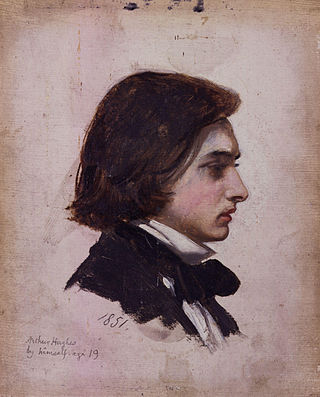
Arthur Hughes was an English painter and illustrator associated with the Pre-Raphaelite Brotherhood.
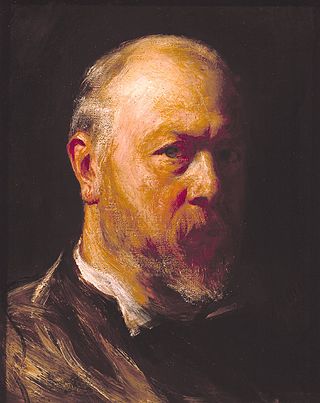
John Pettie was a painter from Edinburgh who spent most of his career in London. He became a member of the Royal Academy in 1866 and a full academician in 1874.

Archibald Thorburn FZS was a Scottish artist who specialised in wildlife, painting mostly in watercolour. He regularly visited Scotland to sketch birds in the wild, his favourite haunt being the Forest of Gaick near Kingussie in Invernesshire. His widely reproduced images of British wildlife, with their evocative and dramatic backgrounds, are enjoyed as much today as they were by naturalists a century ago.

Horatio McCulloch, sometimes written MacCulloch or M'Culloch, was a Scottish landscape painter.
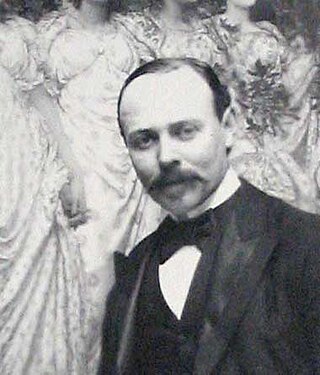
James Coutts Michie ARSA was a Scottish painter who specialised in landscapes and portraits.
The Royal Glasgow Institute of the Fine Arts (RGI) is an independent organisation in Glasgow, founded in 1861, which promotes contemporary art and artists in Scotland. The institute organizes the largest and most prestigious annual art exhibition in Scotland - open to all artists.

Walter William Ouless was a British portrait painter from Jersey. He became an Associate of the Royal Academy (ARA) in 1877 and a full member (RA) in 1881.
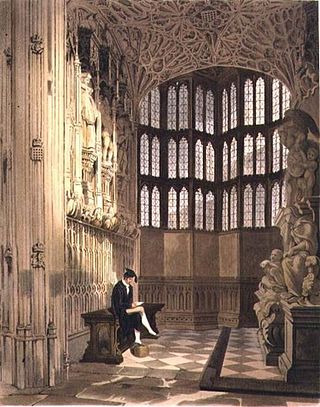
Thomas Uwins was a British portrait, subject, genre and landscape painter in watercolour and oil, and a book illustrator. He became a full member of the Old Watercolour Society and a Royal Academician, and held a number of high-profile art appointments including the librarian of the Royal Academy, Surveyor of Pictures to Queen Victoria and the Keeper of the National Gallery.

James Mathews Leigh was an English art educator, painter, writer, dramatist and critic. He is best known as the founder of a popular private art school in London known as "Leigh's Academy", which eventually became the present day Heatherley School of Fine Art.

James Cassie RSA was a Scottish marine landscape, portrait, genre and animal painter.

James Campbell Noble was a Scottish painter. He signed his paintings, mostly in the left hand bottom corner, as J.C. Noble or as J.Campbell Noble.
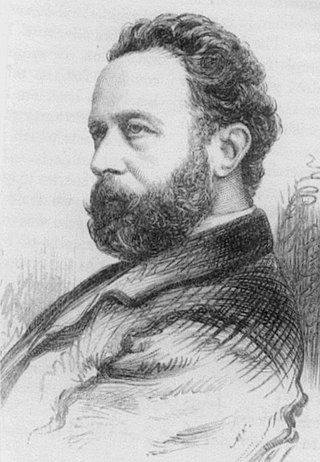
Keeley Halswelle (1831–1891), born John Keeley Haswell, was an English artist.

Scottish art in the nineteenth century is the body of visual art made in Scotland, by Scots, or about Scottish subjects. This period saw the increasing professionalisation and organisation of art in Scotland. Major institutions founded in this period included the Institution for the Encouragement of the Fine Arts in Scotland, the Royal Scottish Academy of Art, the National Gallery of Scotland, the Scottish National Portrait Gallery and the Glasgow Institute. Art education in Edinburgh focused on the Trustees Drawing Academy of Edinburgh. Glasgow School of Art was founded in 1845 and Grays School of Art in Aberdeen in 1885.
William Fleming Vallance was a Scottish marine painter.